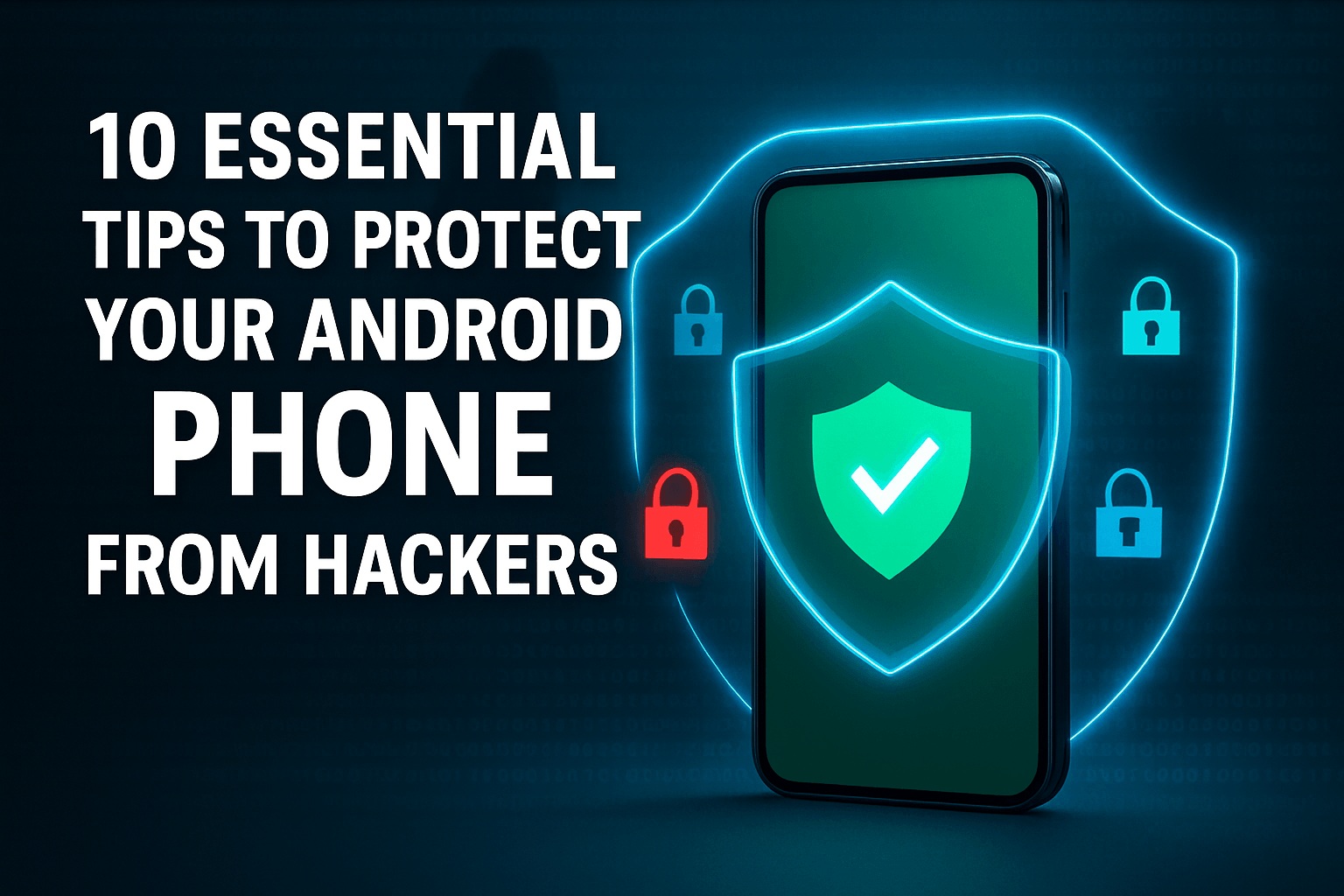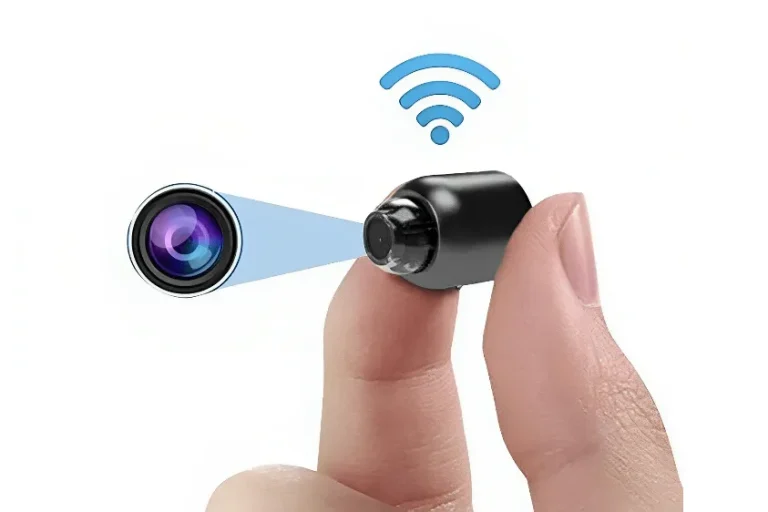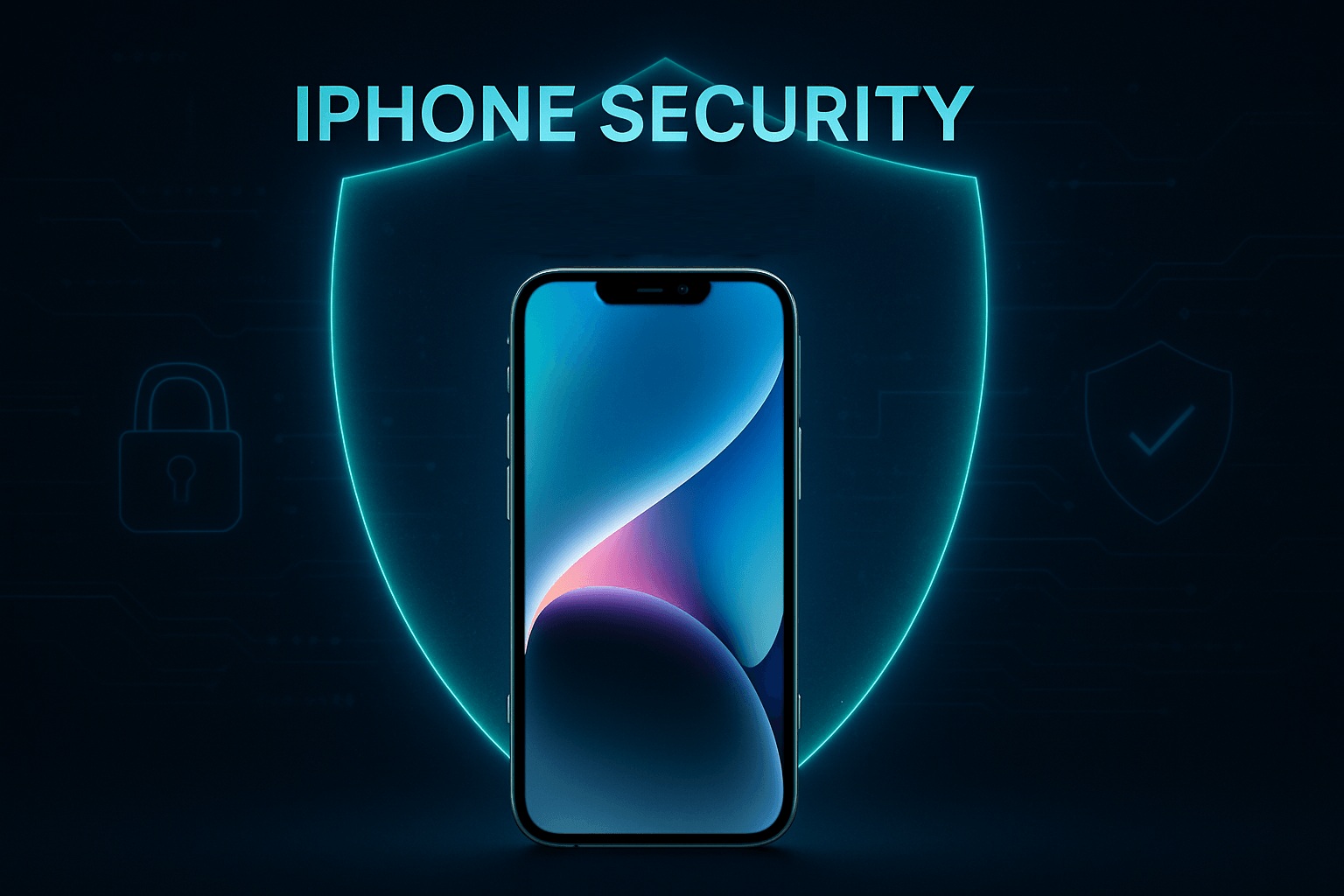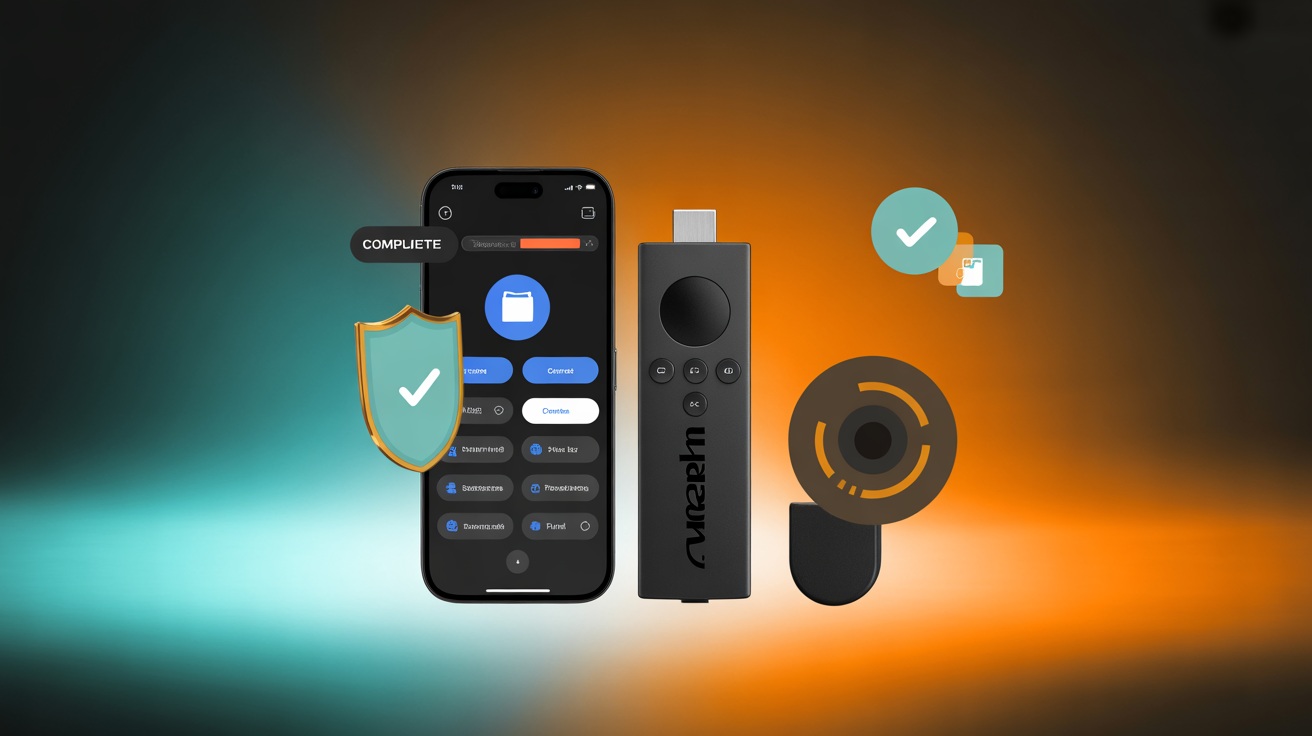10 Essential Tips to Protect Your Android Phone from Hackers
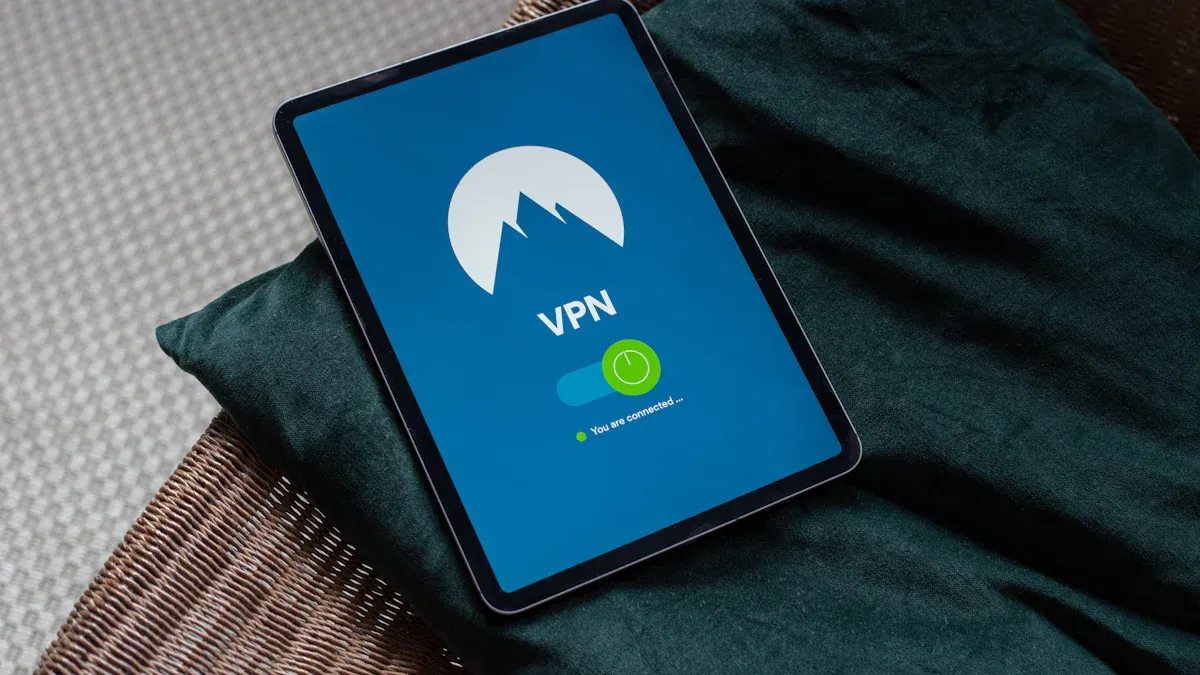
If you want to protect your Android phone from hackers, it’s important to know where to start. Every year, research shows that over 87% of Android phones face major security risks. Most users encounter threats like malware, phishing, and spyware. Hackers often target weak passwords, outdated apps, and unsecured Wi-Fi networks. If you ignore these risks, your personal data could be stolen. Take action now to protect your Android phone, block hackers, and shield your device from harm. Follow these tips to protect your Android phone and keep hackers out.
Key Takeaways
Make strong passwords. Turn on fingerprint or face unlock. This helps keep your phone safe.
Update your Android system and apps often. Updates fix security issues. They help stop hackers.
Turn on two-factor authentication for your accounts. This gives extra protection.
Download apps only from official stores. Check app permissions before installing. This helps you avoid malware.
Use a VPN when you use public Wi-Fi. Back up your data often. This keeps your privacy and files safe.
Protect Android Phone with Strong Locks
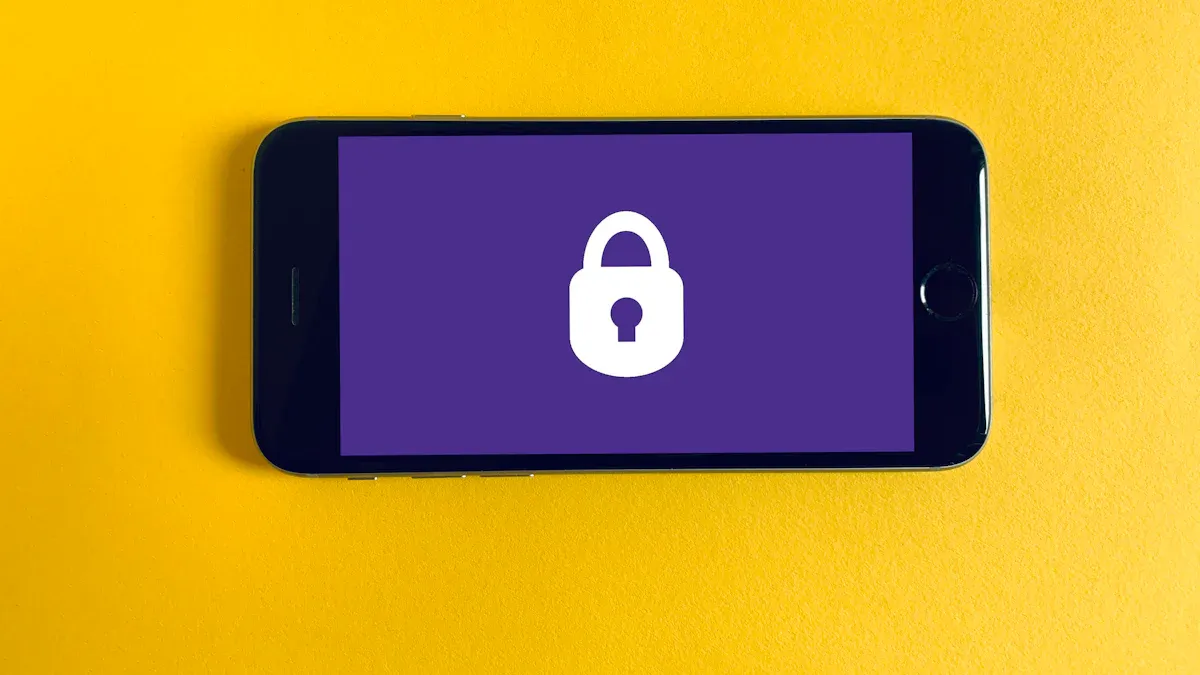
Use a Strong PIN or Password
You want to protect your phone from hackers, so start with a strong lock screen. A simple PIN like “1234” is easy to guess. Instead, practice password hygiene by choosing a password that mixes letters and numbers. Make it at least six characters long. Change your password every few months. Don’t reuse old passwords. If you use a longer PIN, you make it much harder for someone to break in.
Here’s a quick look at how different settings boost your security:
Security Setting | Description & Purpose | Security Impact & Rationale |
|---|---|---|
Require Password to Unlock | Forces you to set a lock screen PIN/password. | Stops anyone from getting into your phone without your code. |
Required Password Type | Use letters and numbers, not just digits. | Makes your password harder to guess or crack. |
Minimum Password Length | At least 6 characters. | More combinations mean better security. |
Password Expiration | Change password every 90 days. | Limits risk if someone finds out your password. |
Password History (Prevent Reuse) | Don’t reuse the last 5 passwords. | Keeps your phone safe by making sure you always use a new password. |
Device Encryption | Encrypt your phone’s storage. | Protects your data even if someone steals your phone. |
Tip: Set your phone to lock quickly when not in use. Short timeouts help secure your phone if you leave it somewhere.
Enable Biometric Security
Biometric security adds another layer of protection. You can use your fingerprint or face to unlock your device. This makes it much harder for someone else to access your phone. Most hackers can’t fake your fingerprint or face. When you combine biometrics with a strong password, you double your security.
You don’t need to be a tech expert to set this up. Just go to your phone’s settings and follow the steps for fingerprint or face unlock. If you want to protect android phone from hackers, using both a strong password and biometrics is one of the best ways to secure your phone.
Keep Software Updated
Updating your Android phone is a simple way to stop hackers. When you update, you fix security problems that hackers use. You do not need to be an expert to stay safe. Just watch for update messages and install them.
Update Android OS
Your phone’s operating system is like the base of a house. If it gets old, it can have weak spots. Hackers look for these weak spots. More than 1 billion Android phones use old software. This makes it easier for hackers to attack. Some attacks, like kernel exploits or the KRACK Wi-Fi problem, hit phones without new patches. Most malware needs you to click on something bad. But old phones are easier for hackers, even if they are not experts.
Here is what experts say about old Android OS:
Over 1 billion phones use old software, so they are easier to hack.
Hackers can use known problems if you skip updates.
Most attacks need you to do something, but old phones have more risks.
Phone makers are trying to give better support and faster updates.
Tip: Install updates right away when you see them. Each update helps protect your phone from new dangers.
See how often updates come out:
Device Brand | Major OS Updates | Security Patch Frequency | Support Duration |
|---|---|---|---|
Samsung | Monthly/Quarterly | ||
Google Pixel | Yearly | Monthly | 3-7 years |
Honor | Yearly | Monthly/Quarterly | Up to 7 years |
Motorola/OnePlus | Yearly | Quarterly/Biannual | 2-3 years |
Update All Apps
Apps can let hackers in if you do not update them. If you skip app updates, your phone is not as safe. Developers make updates to fix bugs and close security holes. Some apps get updates every month. Others update less often. You should check for updates in the Play Store once a week.
Here is a quick checklist:
Open the Play Store and tap your profile.
Go to “Manage apps & device.”
Tap “Update all” to get the newest versions.
Note: Updated apps work better and keep your data safe. Do not wait—make updating your apps a habit!
Keeping your phone updated keeps hackers away and your phone working well.
Enable Two-Factor Authentication
Set Up 2FA on Accounts
You want to keep your accounts safe, right? One of the best ways to do this is to enable two-factor authentication. This adds another step when you log in, making it much harder for hackers to break in. You use your password first, then you prove it’s really you with a second step. This is called two-factor verification.
Most apps and services let you turn on two-factor identification. You can find this option in your account settings for email, social media, and banking apps. When you set it up, you usually get to pick how you want to get your code. Some people use text messages, but it’s safer to use an authenticator app like Google Authenticator or Authy. These apps make a new code every time you log in, so hackers can’t guess it.
Here’s how you can set up two-factor verification on your Android accounts:
Open your account settings in the app or website.
Look for “Security” or “Login & Security.”
Choose “Two-Factor Authentication” or “2-Step Verification.”
Pick an authenticator app for the best protection.
Follow the steps to link your account.
Tip: Avoid using SMS codes if you can. Hackers can steal these with tricks like SIM swapping.
Why 2FA Matters
You might wonder why you need two-factor identification if you already have a strong password. The answer is simple: passwords can get stolen. With two-factor authentication, even if someone knows your password, they still need your second code to get in.
Two-factor verification adds a strong layer of security.
Authenticator apps are safer than SMS codes.
Google saw a 50% drop in account hacks after turning on 2FA for millions of users.
Hackers can’t get past the second step without your phone or code.
Remember: Two-factor identification protects your personal info and keeps hackers out. It’s one of the easiest ways to boost your security on Android.
Download Apps from Official Stores
Avoid Third-Party Sources
You want your Android phone to be safe. The best way is to get apps from official stores like Google Play. These stores check apps before you can download them. This helps keep your phone safe from problems. Third-party app stores are not as careful. They do not check apps as much. You could get malware or spyware without knowing.
Did you know? Half of all hacked Android devices use third-party stores. Malware like SharkBot hides in these stores. It can steal your banking info, even after being removed from Google Play.
Here is what can happen if you sideload apps from unofficial places:
Some apps ask for too many permissions and risk your privacy.
Fake apps might make payments you did not allow.
Data breaches can happen if apps get your private info.
Bad security can let someone take over your account.
Some stores have weak rules, so malware gets in easily.
If you sideload apps, you are 80% more likely to get malware. Almost 40% of malware comes from these risky downloads. Sideloading skips your phone’s security. This makes it easier for hackers to take control.
Check App Permissions
Always check what permissions an app wants before you install it. Even apps from official stores can ask for too much access. If an app wants to read your messages, see your contacts, or use your camera, think about why. Only give permissions that make sense for the app.
Permission Type | What It Does | Should You Allow? |
|---|---|---|
Location | Finds where you are | Only for maps or rides |
Contacts | Reads your contacts list | Only for messaging apps |
Camera/Microphone | Takes photos or records | Only for photo or video |
SMS | Reads or sends texts | Rarely needed |
Tip: If an app asks for lots of permissions, read reviews or pick another app. You can change permissions later in your phone’s settings.
Using official stores and checking permissions helps you control your data. It also keeps hackers away. Be smart and protect your phone every time you download something new.
Use Security Apps to Protect Your Smartphone
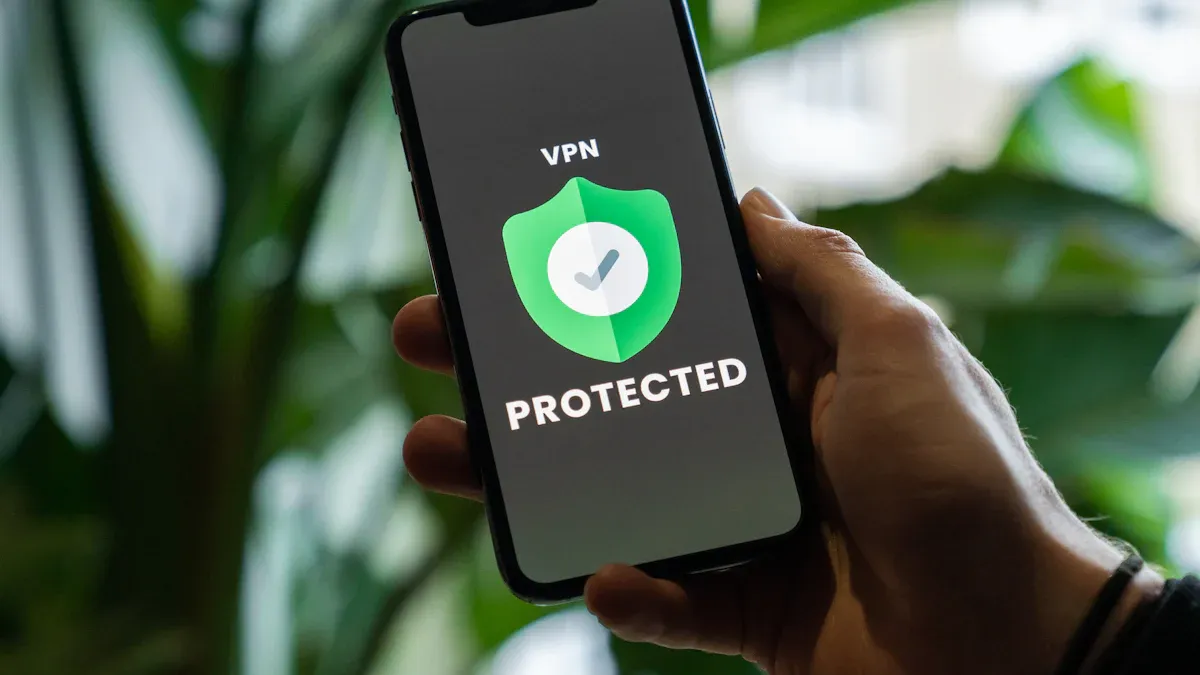
Install Antivirus or Anti-Malware
You want to keep hackers and bad apps away from your phone. One easy way is to use an antivirus app. These apps look for threats like trojans, ransomware, spyware, and adware. They can find malware that pretends to be games or tools. Some security apps, like TotalAV or Malwarebytes, block phishing links and warn you about risky downloads.
Let’s see how well these apps do their job. Experts checked 250 antivirus apps for mobile security. Only 23 found every threat, but 80 missed most malware. The best apps use smart tools to find new dangers. Some only use old lists of bad files. You should pick trusted brands for antivirus on your phone.
Aspect | Details |
|---|---|
Number of antivirus tools tested | 250 |
Number achieving 100% detection | 23 |
Detection rate range expected | 90% to 100% |
Number detecting only 30% of malware | 80 |
Limitations noted | Signature-based detection is reactive; some antivirus apps contain malware or vulnerabilities |
The best security apps catch almost all threats. Here’s a quick look:
Android Security App | Real-time Detection Rate (%) |
|---|---|
G Data Internet Security | 100 |
Kaspersky Lab Internet Security | 99.9 |
McAfee Mobile Security | 99.8 |
PSafe DFNDR | 99.8 |
Symantec Norton Mobile Security | 100 |
Tencent WeSecure | 100 |
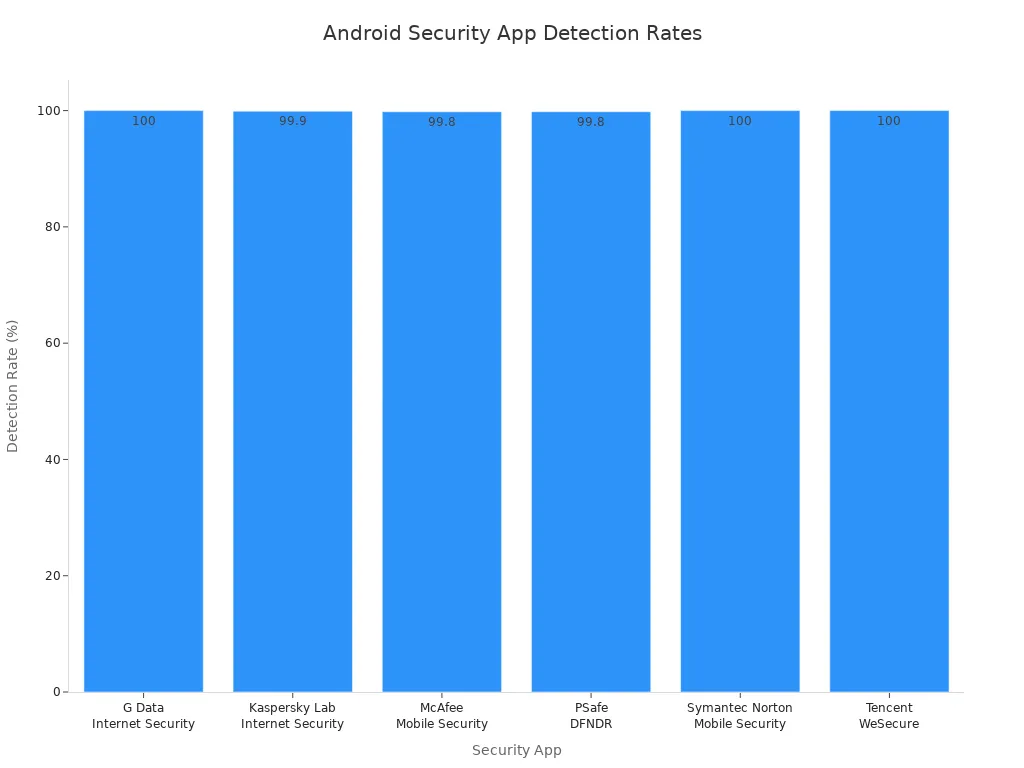
Tip: Always get antivirus apps from the official store. Do not use apps with few reviews or strange permissions.
Regular Device Scans
You need to keep your phone safe from new threats. Regular scans help you find problems before they get worse. Security apps check for unsafe settings, old software, and apps you did not install. Most security apps scan by themselves and give you simple reports.
Here’s why scanning your phone often is smart: You find malware early. You see apps with too many permissions. You fix weak settings fast. You stay ahead of hackers.
Note: Set your security app to scan every week. Quick scans keep your phone safe and help protect your smartphone from new risks.
Avoid Suspicious Links and Phishing
Recognize Phishing Attempts
Phishing is one of the sneakiest tricks hackers use to get into your phone. You might get a text or email that looks real, but it’s actually a scam. Hackers often pretend to be banks, delivery companies, or even your favorite social media app. They want you to click a link or share your personal info.
Here are some common phishing tricks you might see on your Android phone:
Smishing: Fake texts about package deliveries or account problems.
Malicious links in emails: Messages that look like they come from your bank or a store.
Fraudulent apps: Apps that pretend to be real but steal your info.
Social media scams: Fake warnings about your account getting shut down.
QR code phishing: Scammers send you a QR code that leads to a fake website.
Voice phishing (vishing): Calls that try to scare you into giving up passwords.
You might see a message like, “Your package is delayed. Tap here to reschedule.” Or you could get a warning that says, “Your bank account is locked. Log in now to fix it.” These messages often use short or strange-looking links. Hackers hope you won’t notice.
Tip: Always check who sent the message. If something feels off, don’t trust it. Go to the official website or app instead of clicking the link.
Safe Browsing Tips
You can prevent phone hacking by staying alert online. Here are some easy ways to browse safely:
Don’t click on links from people you don’t know.
Look for spelling mistakes or weird grammar in messages.
Never share your passwords or personal info through links in texts or emails.
Use your browser’s built-in security features. Most browsers warn you about risky sites.
Double-check web addresses. Real sites use “https” and have the right spelling.
If you get a QR code, make sure it’s from someone you trust before you scan it.
Phishing Sign | What You Should Do |
|---|---|
Unknown sender | Ignore or delete the message |
Urgent requests | Stay calm and verify first |
Shortened URLs | Don’t click, check the link |
Staying smart about links and messages is one of the advanced ways to prevent phone hacking. When you know what to look for, you can keep your Android phone safe from scams.
Use VPN on Public Wi-Fi
Why VPNs Help
You probably use public Wi-Fi at coffee shops, airports, or hotels. These networks feel convenient, but they are not safe. Hackers love public Wi-Fi because it is easy to steal information. When you connect, anyone nearby can try to grab your data. They might use tricks like man-in-the-middle attacks or fake hotspots.
A VPN keeps you safe by creating a private tunnel for your internet traffic. It will encrypt data that leaves your phone, so hackers cannot read it. Even if someone intercepts your messages or browsing history, they only see scrambled code. VPNs use strong encryption, like AES-256, which is trusted by government agencies. Some VPNs even have a kill switch. If your VPN drops, the kill switch stops your phone from sending data until you reconnect. Split tunneling lets you pick which apps use the VPN, so you can balance security and speed.
Tip: VPN apps are easy to find on Google Play. You can choose free or paid options to protect your Android phone every time you use a vpn on public networks.
Here’s why you should always use a VPN on public Wi-Fi:
Hackers cannot steal your passwords or banking info.
Your real location stays hidden.
You avoid identity theft and data leaks.
VPNs help block malware and keep your device safe.
Choose a Reliable VPN
Not all VPNs are the same. You want one that keeps your information private and works well on Android. Here’s a quick table to help you compare VPNs:
Criteria | What to Look For | How to Test or Check |
|---|---|---|
Privacy Policies | No-logs policy, strong privacy features | Read privacy policy, check reviews |
Encryption Strength | Uses AES-256 or ChaCha20, has a kill switch | Look for these features in app details |
Leak Prevention | No IP or DNS leaks | Use leak test tools online |
Speed Performance | Fast speeds on many servers | Try speed tests in the app |
Ease of Use | Simple setup, easy to use on Android | Download and try the app |
Server Locations | Many servers in different countries | Check server list in the app |
Customer Support | Fast and helpful support | Contact support with a question |
Extra Features | Split tunneling, ad blocker, multi-hop | Explore app settings |
Pick a VPN that matches your needs. Make sure it can encrypt data, keep your connection private, and offer good support. A reliable VPN gives you peace of mind every time you connect to public Wi-Fi.
Manage App Permissions
Review Permissions Regularly
You probably have many apps on your Android phone. Each app asks for different permissions. Some want to see your contacts or use your camera. Others want to read your messages. Many apps ask for more than they need. This can put your privacy in danger. You should check your app permissions often. Remove any that you do not need.
Here’s what experts found about popular Android apps:
Metric/Observation | Details |
|---|---|
Number of apps analyzed | 50 popular Android apps |
Average number of dangerous permissions | 11 per app |
Maximum permissions requested by an app | 29 (MyJio app) |
Examples of apps with high permission counts | WhatsApp (26), Truecaller (24), Google Messages (23), Facebook (22), Instagram (19) |
Most requested permissions | Post notifications (47 apps), Write external storage (40), Read external storage (34), Camera and audio recording (33), Get accounts (27), Fine location (26), Read contacts (26), Bluetooth connect (22), Read phone state (22) |
App categories requesting most permissions | Communication apps ( |
Privacy risk implication | Many permissions are unnecessary and can be exploited to compromise user privacy |
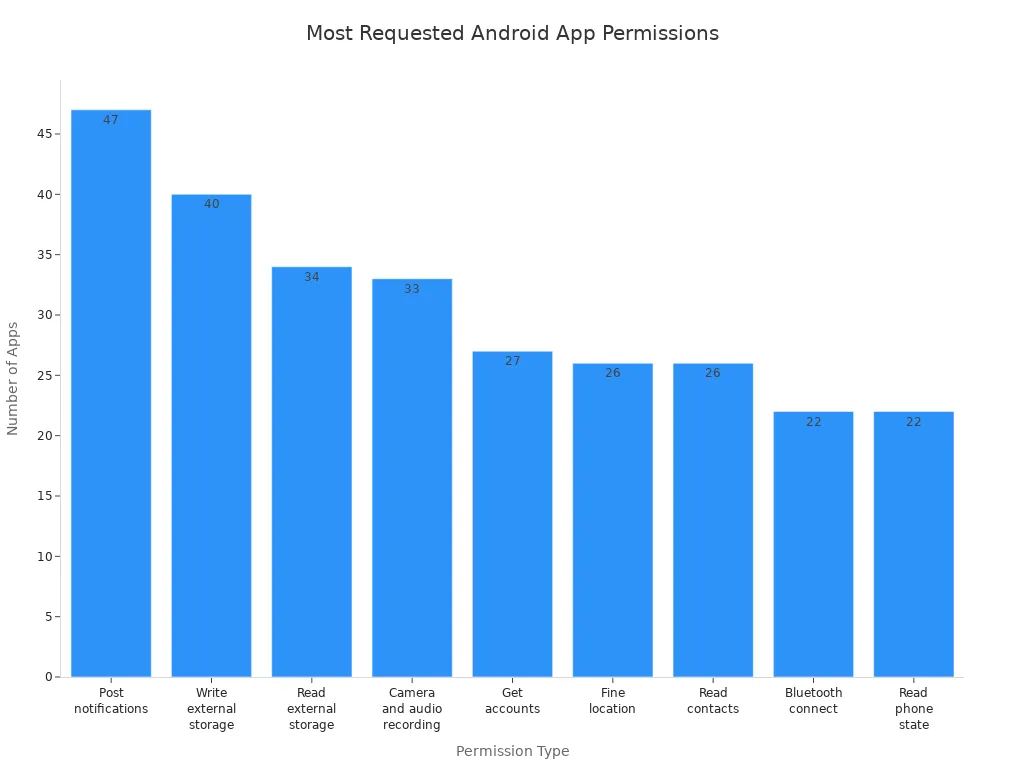
NowSecure found that 62% of Android apps ask for risky permissions. These permissions can let apps see your private data. They can also control important parts of your phone. You should open your phone’s settings and look at permissions for each app. If an app asks for something it does not need, turn off that permission. You can also delete the app.
Tip: Delete apps you do not use. Fewer apps mean fewer risks.
Limit Access to Sensitive Data
You can do things to keep your sensitive data safe. Follow these best tips to lower your risk:
Use Android’s built-in sandbox and file permissions to keep apps apart.
Encrypt important data on your phone with strong tools like AES.
Store encryption keys in the Android Keystore, not inside the app.
Make sure all your apps use HTTPS to protect data when it moves.
Only give apps the permissions they really need. This is called the principle of least privilege.
Use strong session management, like secure tokens and timeouts.
Keep as little sensitive data on your phone as possible. Use secure cloud storage when you can.
Test your phone for security problems and update your apps often.
If you do not root your device, it is much harder for apps to break through these protections. No method is perfect, but these steps help you keep control of your privacy and security.
Back Up Data and Sync Safely
Regular Backups
You never know when a hacker might strike or your phone could get lost. If you want to keep your photos, contacts, and messages safe, you need to back up the data often. Don’t rely only on cloud storage. If your cloud account fills up, new files stay only on your phone. That means you could lose important stuff if something goes wrong.
Here are smart ways to protect your files:
Move your data to an external hard drive or computer. This gives you a second copy if your phone gets hacked.
Use online backup services like Google Drive, MEGA, or Dropbox. These options keep your files safe and easy to reach from any device.
Keep more than one backup. If you have copies in different places, you can recover your info quickly after a cyberattack.
Back up your files regularly. Don’t wait for trouble. Make it a habit to save your data every week or after you add new photos or contacts.
Tip: If you use public cloud services, your risk of data loss goes up. Always keep backup copies somewhere safe.
Backup Method | Security Level | Ease of Use | Best For |
|---|---|---|---|
External Hard Drive | High | Medium | Photos, videos, docs |
Google Drive | High | Easy | Contacts, photos |
Dropbox | High | Easy | Documents, files |
MEGA | Very High | Medium | Sensitive files |
Cancel Unnecessary Sync
Syncing helps you keep your data up to date across devices, but too much syncing can put your privacy at risk. Some apps sync files you don’t need or share info with services you don’t trust. You should check which apps are syncing and turn off the ones you don’t use.
Here are safe ways to sync your data:
Use Google Backup and Sync for easy and secure backups when you set up a new phone.
Try AirDroid Personal for wireless file transfers on the same Wi-Fi network.
Send Anywhere uses strong encryption to move files without Wi-Fi or mobile data.
Brand-specific apps like Samsung Smart Switch and OnePlus Smart Switch help you transfer messages, notes, and files safely.
For quick transfers, use Bluetooth, Nearby Share, or even NFC if your phone supports it.
If you want to avoid third-party apps, connect your phone to your computer with a USB cable and move files directly.
Note: Turn off sync for apps you don’t use. This lowers your risk and keeps your private info safe.
Sync Method | Security Level | Best Use Case |
|---|---|---|
Google Backup & Sync | High | Full device backup |
AirDroid Personal | High | Large file transfers |
Send Anywhere | Very High | Secure sharing |
USB Transfer | High | Direct file moves |
Bluetooth/Nearby Share | Medium | Small files |
If you keep your backups current and control your syncing, you make it much harder for hackers to steal your data.
Lock or Wipe Your Phone if Lost
Losing your phone can feel scary. You might worry about someone getting your photos, messages, or private info. The good news is, you have tools that help you protect your data, even if your phone is gone.
Enable Find My Device
First, you should turn on Find My Device. This tool lets you track your phone on a map. You can see where your phone is if you lose it at school, work, or anywhere else. To set it up, open your phone’s settings, tap “Security,” then choose “Find My Device.” Make sure it is on. You need to sign in with your Google account for this to work.
If you ever lose your phone, just visit the Find My Device website on a computer or another phone. You can make your phone ring, even if it is on silent. This helps you find it if it is nearby. If you left your phone at a friend’s house or in a classroom, you can spot it fast.
Tip: Never leave your phone unattended in public places. Keep it in your pocket or bag when you are not using it.
Remote Lock and Erase
If you cannot get your phone back, you can lock or wipe your phone from far away. Use Find My Device to lock your screen with a new password. You can also show a message on the screen, like your contact info, so someone can return it.
If you think someone might steal your data, use the erase feature. This will delete everything on your phone. Tools like Find My Device, Samsung SmartThings Find, and apps like Prey let you do this. Remote lock and erase work best if your phone is online and set up right. When you erase your phone, you stop most thieves from seeing your info. This keeps your security strong.
Keep in mind, remote wipe does not stop someone from selling your phone or using its parts. Some skilled thieves may block the wipe by turning off the phone or removing the SIM card. Still, using these features gives you the best chance to protect your data if your phone is lost or stolen.
Remove a Hacker from My Phone
Identify Signs of Hacking
You might wonder if your phone has been hacked. Spotting the problem early helps you protect your data. Here are some common signs of a hacked phone you should watch for:
Your battery drains much faster than usual.
The phone feels hot even when you are not using it.
You see strange apps you did not install.
Pop-up ads appear all the time.
Your phone runs slowly or freezes.
You notice calls or texts you did not send.
The camera or microphone light turns on by itself.
You get verification codes you did not request.
Your storage fills up quickly.
You lose access to accounts or get locked out.
If you spot any of these signs of a hacked phone, act fast. Hackers can steal your personal info or spy on your activity.
Steps to Remove Threats
You want to know how to remove a hacker from my phone. Start with these steps to kick out unwanted guests and keep your device safe:
Turn on airplane mode. This blocks hackers from controlling your phone remotely.
Check your apps. Remove any unfamiliar or suspicious apps right away.
Review app permissions. Make sure no app can access your private data without reason.
Clear your cache and cookies. This helps remove traces of malware.
Change your passwords. Use strong, unique passwords for all your accounts.
Run a trusted antivirus scan. Let it find and delete hidden threats.
Update your operating system and all apps. Security patches fix weak spots hackers use.
Avoid rooting or jailbreaking your phone. These actions make your device easier to hack.
If problems continue, perform a factory reset. This wipes most malware and returns your phone to its original state.
Note: Factory resets remove many viruses and malware, but some threats hide deep in the system. If your phone stays hacked after a reset, you may need expert help.
Knowing how to remove a hacker from my phone gives you control. Stay alert, follow these steps, and keep your Android safe from future attacks.
You have the power to protect android phone from hackers. When you follow these 10 tips, you make it much harder for anyone to break in or steal your data. Here’s how these steps help:
Avoiding risky Wi-Fi and keeping your software updated blocks many attacks.
Using remote lock and wipe features keeps your info safe if your phone goes missing.
Backing up your data and deleting unused apps limits what hackers can reach.
Stay alert and revisit these tips often. Technology changes fast, so keep learning new ways to protect android phone and protect your phone from hacking.
FAQ
How often should you update your Android phone?
You should check for updates every week. Updates fix security problems and keep hackers out. If you see a new update, install it right away. This helps your phone stay safe and run smoothly.
What should you do if you download a suspicious app?
Delete the app as soon as possible. Run a security scan with your antivirus app. Change your passwords if you think your data got stolen. Only download apps from the Google Play Store to avoid future risks.
Is it safe to use free Wi-Fi without a VPN?
No, it is not safe. Hackers can steal your information on public Wi-Fi. Always use a VPN when you connect to free Wi-Fi. A VPN keeps your data private and protects you from attacks.
Can you recover your data if your phone gets wiped remotely?
If you backed up your data before, you can restore your files. Use Google Drive or another backup service. Without a backup, you will lose your photos, contacts, and messages. Make regular backups to avoid losing important information.
What signs show your phone might be hacked?
Look for these signs:
Battery drains fast
Strange apps appear
Pop-up ads show up
Phone feels hot
You get texts you did not send
If you notice these, act quickly to protect your phone.

